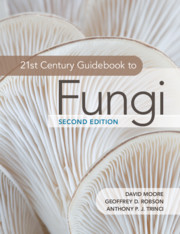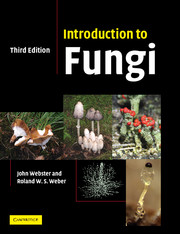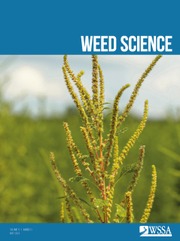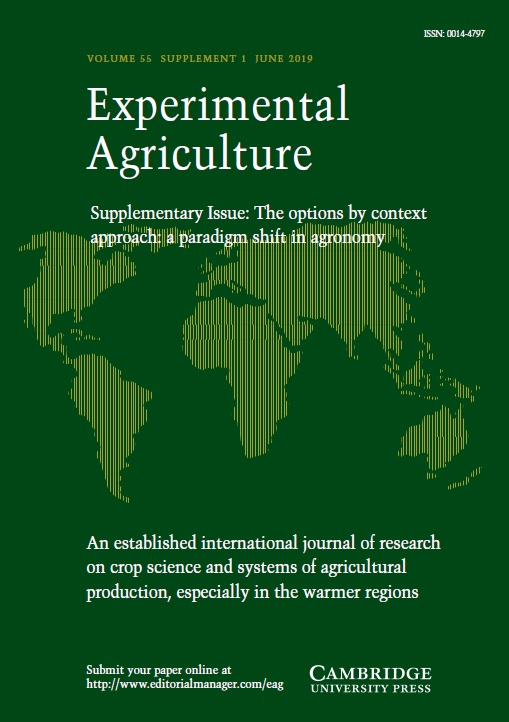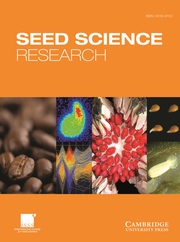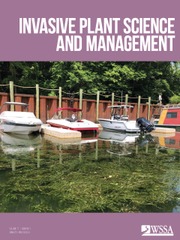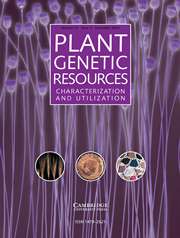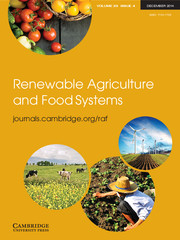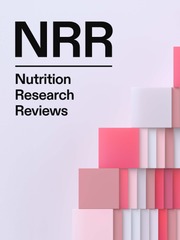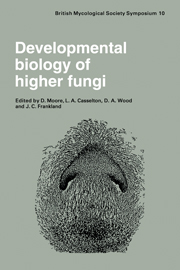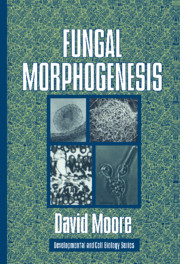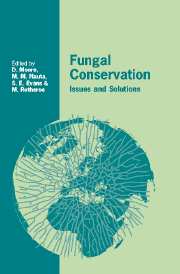21st Century Guidebook to Fungi
with CD-ROM
- Authors:
- David Moore, University of Manchester
- Geoffrey D. Robson, University of Manchester
- Anthony P. J. Trinci, University of Manchester
- Date Published: July 2011
- availability: Unavailable - out of print
- format: Mixed media product
- isbn: 9780521186957
Mixed media product
Looking for an inspection copy?
This title is not currently available for inspection. However, if you are interested in the title for your course we can consider offering an inspection copy. To register your interest please contact [email protected] providing details of the course you are teaching.
-
Fungi have their own unique cell biology and life cycle, but also play critical roles in wider biological systems. This textbook provides a comprehensive view of fungal biology, ranging in scope from the evolutionary origins of fungi and other eukaryotes more than a billion years ago, to the impact fungi have on everyday life. Bringing mycology teaching right up to date, this unique systems biology approach emphasises the interactions between fungi and other organisms to illustrate the critical roles that fungi play in every ecosystem and food web. With more than 60 colour figures, examples of computational modelling and resource boxes directing students to areas of interest online, this book gives students an appreciation of fungi both at the organism level and in the context of wider biology. A companion CD accompanying the print book features a hyperlinked version of the book and the fully integrated World of Cyberfungi website.
Read more- Unique system biology approach helps students to appreciate fungi as critical components of wider ecosystems
- Over 20 resource boxes point students towards sources of further information, with DOI numbers included where possible to allow quick and easy access to the original electronic documents
- Companion CD features a hyperlinked version of the book, the fully integrated World of Cyberfungi website and the Neighbour-Sensing interactive fungal growth simulator program
Reviews & endorsements
'Mycology is often seen as a relatively small specialist discipline; however, this expansive treatment of the subject reaches the parts that other textbooks fail to reach, even putting fungi in the context of the cosmos! This interactive textbook will make a valuable contribution to modernising fungal science education, providing a platform for 21st century mycology teaching in universities and colleges.' Alison M. Ashby, British Mycological Society and University of Cambridge
See more reviews'The 21st Century Guidebook to Fungi is a game changer. It will provide the current techno savvy generation of students with a format that matches their learning style. The information is extensive and accessibly presented and the links provide students with tools to improve their critical thinking and lifelong learning skills. I will use it in a large class format with students at a wide range of levels. Thank you for your hard work in producing this truly superior product.' Scott E. Gold, University of Georgia
'This will be very popular and will certainly fill a major gap in the available textbook literature … I will be recommending it on the MSc microbiology course I now help with.' D. L. Hawksworth CBE, International Mycological Association, Universidad Complutense de Madrid, and Natural History Museum, London
'This book will be very useful to all industrial microbiologists. The 21st Century Guidebook to Fungi manages to combine classical mycology with advances in molecular phylogeny, and also covers recent advances in a whole host of other topics. The writing is crisp and concise. In particular, the layout is very well thought out. A wonderful starting point for anyone involved in working with fungi.' Mark Loftus, L. F. Lambert Spawn Co.
'The idea of integrating both a CD-ROM and a book makes this very timely, and a powerful educational tool for use at both undergraduate and postgraduate level. The key aspects of mycology are comprehensively covered with excellent diagrams, figures and images to help the educational process.' Naresh Magan, Cranfield University
'Fungi are significant things: without them, there would be no grasslands and forests and humans would never have evolved. The 21st Century Guidebook to Fungi introduces students to the vast sweep of fungal biology and does an admirable job of explaining what these fascinating organisms are, how they work, and what they do.' Nicholas P. Money, Miami University, Ohio
'Fungi are exciting organisms to study but they are often the preserve of the specialist. That's all changed with the production of this book. Moore, Robson and Trinci have now made fungi accessible to everyone with interesting comments, explanatory figures, clear illustrations and personal observations. Even if you are not a student of physiology or genetics the book is reader friendly such that you can pick the book up and choose a chapter. For those, amateur or student, who want to learn more about fungi this is your text; even the professional will find it of great use in refreshing the memory and I am sure will pick up a few tricks in doing so.' Roy Watling MBE, FRSE, Royal Botanic Gardens, Edinburgh
'… written in delightful prose, integrating concepts and interdisciplinary knowledge. … very user friendly … The CD is a great feature of the book, making this an outstanding resource. … a very useful book for fungi aficionados, experts, students, and classroom teaching. This book could become a classic in the field and will be an enjoyable read for anyone wanting to learn more about fungi.' Plant Science Bulletin
'This is an innovative text, both in its presentation and its organization. The authors' broad experience and nearly encyclopedic knowledge lend strength and their many years of teaching experience all increase its value. The volume is remarkably well written and well copy edited. This book is a marvelous effort to holistically integrate mycology into modern systems biology.' David Yohalem, Inoculum
Customer reviews
Not yet reviewed
Be the first to review
Review was not posted due to profanity
×Product details
- Date Published: July 2011
- format: Mixed media product
- isbn: 9780521186957
- length: 639 pages
- dimensions: 275 x 219 x 31 mm
- weight: 1.92kg
- contains: 406 b/w illus. 57 tables
- availability: Unavailable - out of print
Table of Contents
Preface
Part I. Nature and Origins of Fungi:
1. 21st-century fungal communities
2. Evolutionary origins
3. Natural classification of fungi
Part II. Fungal Cell Biology:
4. Hyphal cell biology and growth on solid substrates
5. Fungal cell biology
6. Structure and synthesis of fungal cell walls
Part III. Fungal Genetics and Diversity:
7. From the haploid to the functional diploid: homokaryons, heterokaryons, dikaryons and compatibility
8. Sexual reproduction: the basis of diversity and taxonomy
9. Continuing the diversity theme: cell and tissue differentiation
Part IV. Biochemistry and Developmental Biology of Fungi:
10. Fungi in ecosystems
11. Exploiting fungi for food
12. Development and morphogenesis
Part V. Fungi as Saprotrophs, Symbionts and Pathogens:
13. Ecosystem mycology: saprotrophs, and mutualisms between plants and fungi
14. Fungi as pathogens of plants
15. Fungi as symbionts and predators of animals
16. Fungi as pathogens of animals, including man
Part VI. Fungal Biotechnology and Bioinformatics:
17. Whole organism biotechnology
18. Molecular biotechnology
Part VII. Appendices: Appendix 1. Outline classification of fungi
Appendix 2. Mycelial and hyphal
Index.-
Find resources associated with this title
Type Name Unlocked * Format Size Showing of
This title is supported by one or more locked resources. Access to locked resources is granted exclusively by Cambridge University Press to lecturers whose faculty status has been verified. To gain access to locked resources, lecturers should sign in to or register for a Cambridge user account.
Please use locked resources responsibly and exercise your professional discretion when choosing how you share these materials with your students. Other lecturers may wish to use locked resources for assessment purposes and their usefulness is undermined when the source files (for example, solution manuals or test banks) are shared online or via social networks.
Supplementary resources are subject to copyright. Lecturers are permitted to view, print or download these resources for use in their teaching, but may not change them or use them for commercial gain.
If you are having problems accessing these resources please contact [email protected].
Sorry, this resource is locked
Please register or sign in to request access. If you are having problems accessing these resources please email [email protected]
Register Sign in» Proceed
You are now leaving the Cambridge University Press website. Your eBook purchase and download will be completed by our partner www.ebooks.com. Please see the permission section of the www.ebooks.com catalogue page for details of the print & copy limits on our eBooks.
Continue ×Are you sure you want to delete your account?
This cannot be undone.
Thank you for your feedback which will help us improve our service.
If you requested a response, we will make sure to get back to you shortly.
×

